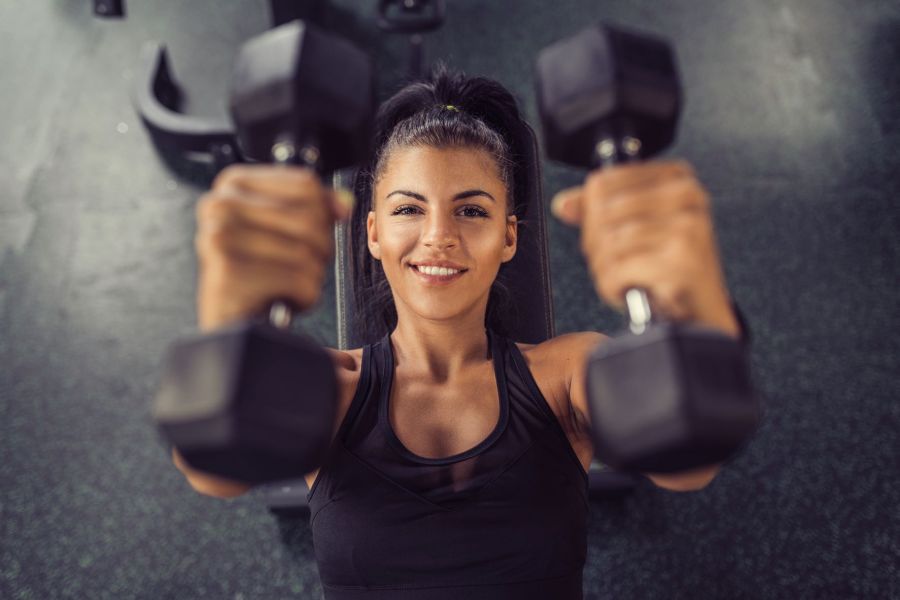No matter how much (or how little!) time you’re able to set aside for your gym session, learn how to get more bang for your workout buck and exercise more effectively with these time-saving gym tips from our experts…
Related: How to motivate yourself to go to the gym
Q. ‘What training techniques can I use to improve my gym results?’
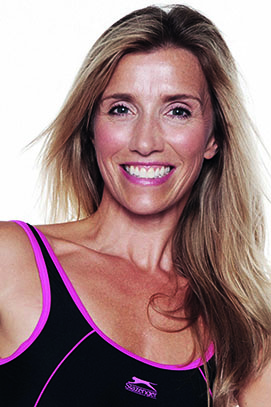
Joey Bull, four-times UK Fitness Champion and PT
Joey Bull’s gym tips: ‘Since some gym etiquette has changed as a result of the pandemic, dashing from apparatus to apparatus seems to be harder. This has a slowing and limiting effect on speedy workouts. So, working with what is available is key to maximising your gym time.
‘Try this: have a good cardio warm-up before starting resistance training. This is not only to prepare the muscles for exercise but also to boost neurovascular coupling, connections and communications to command better precision of movement.
‘Next, move into the weights area. Start with a different body-part focus on different days, so you might begin by training legs on Monday but
start with the upper body moves on Wednesday. Get specific. Learn what you need to work on and start with your least favourite parts, as these are likely to be the least responsive muscles. This might be your rear shoulders or hamstrings, for example – parts that make a big difference to your stability and symmetry.
‘Then, if the right machines are free, try exercising in supersets (working opposing muscles, back to back). You might do an exercise that works the front thigh and then one that works the rear thigh, or a biceps then a triceps move. If you’re stuck on one piece of kit, vary the angles of the movement, at least, by changing your foot placement or hand grip.
‘Play with speed of movement, too – pull faster and release super slowly on the eccentric (muscle-lengthening) movement, or squat down fast and come up slowly. There are positive studies on the benefits of this type of training, but take it steadily if you’re new to it! Small variations such as these can go a long way to boosting muscle growth.’
Joey Bull is a four-times UK Fitness Champion and a PT of 30 years. She’s also an author, dance teacher, former GB adventure racer and flag flyer for the fit 50+.
Related: Joey Bull: How to stay fit and healthy over 50
Q. ‘I’ve only got 15 minutes for exercising. Do I really need to warm up and cool down?’
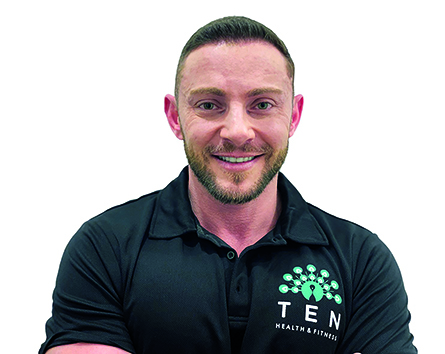
Brett Starkowitz, master trainer and head of education at Ten Health & Fitness
Brett Starkowitz’s gym tips: ‘You absolutely need to have an element of warming up, even if it’s a short one. Warming up before a workout is widely believed to decrease post-exercise muscle soreness, reduce the risk of injury as well as lead to improved athletic performance.
‘A warm-up pumps nutrient-rich, oxygenated blood to your working muscles as your heart rate and respiration rate increase. The increased oxygen delivery to the muscles enhances metabolic activity and improves the muscles’ readiness to start working. Plus, it helps you to mentally prepare and focus on your workout, leading to superior technique, coordination and execution.
‘Take note that your warm-up routine should stimulate the muscle group you are about to work. So if you’re about to do a lower body HIIT workout, consider doing some bodyweight lunges and squats, plus some light jogging on the spot to start.
‘And cooling down is vital, too. Abruptly ending your workout can lead to dizziness and muscle cramps. Cooling down helps rid muscles of lactic acid build-up, reducing the occurrence of post-exercise muscle soreness and injury. Bring your workout to a close by working slower and at a lower intensity, possibly with some static stretching.’
Brett Starkowitz is master trainer and head of education at Ten Health & Fitness, and a Pilates teacher at Ten’s studios.
Related: How to warm up for exercise: 10 minute routine
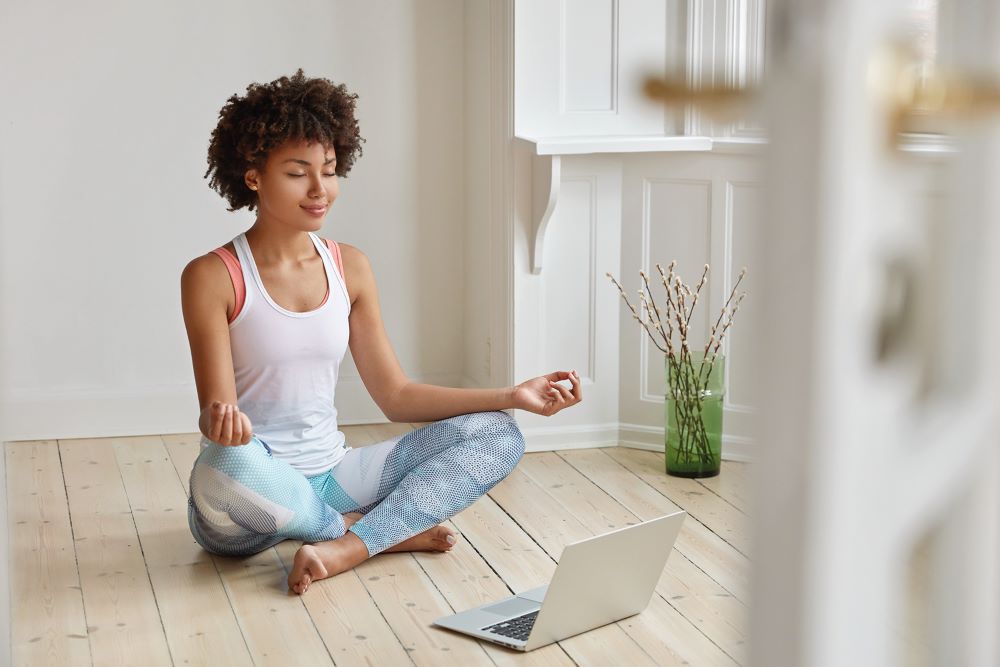
Q. ‘Is 10 minutes of yoga enough and what should I do to make the most of my time?’
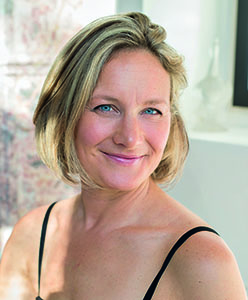
Kat Farrants founder of Movement for Modern Life
Kat Farrants’s gym tips: ‘Most of us live a very sedentary life and yoga is a great antidote to this as it moves the body in all directions and combines movement with mindfulness. Even just taking 10 minutes out of your day for a short yoga sequence or a simple breathing exercise can be so beneficial.
‘It’s not about demanding more of your body, it’s about taking responsibility for your own health and wellbeing and really checking in with what you want to get out of our yoga practice. In the past, we might have seen a yoga class as a place to escape from our lives, but I see our yoga practice as the perfect place to take a deep inquiry within and ask, “What is it that I really need today?”.
‘For me, online yoga is the ideal solution when you are time-poor, as you can just get on and do it anytime with no airs and graces. The Movement For Modern Life platform gives you the freedom to choose exactly how you want to move on that day, at that time and for how long. This way, you can decide what your body really needs, instead of just being reactive to what is offered or convenient. It’s time to check in, to go inwards, and to discover what your body and mind needs at that moment.’
Kat Farrants is founder of Movement for Modern Life, dubbed ‘the Netflix of Yoga’. Her mission is to help you live a happier, healthier and more sustainable life.
Related: What is yoga? Benefits & basic principles for beginners
Q. ‘I don’t have time for setting up gadgets! How can I use rate of perceived exertion (RPE) to improve my workouts?’
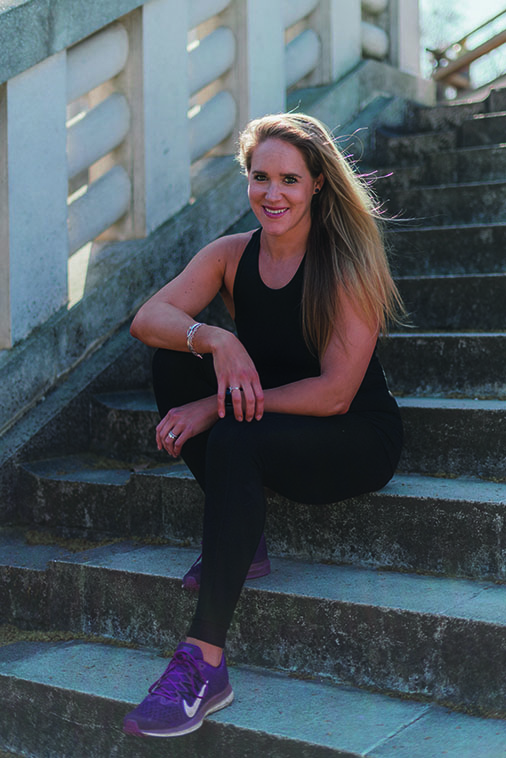
Sarah Campus, founder of LDN MUMS FITNESS
Sarah Campus’s gym tips: ‘RPE stands for Rate of Perceived Exertion and is a scale of exertion, rating from one to 10 (whereby one represents no effort and 10 represents maximum effort). This scale corresponds with a feeling of breathlessness. One on the RPE means you’re lying on the couch; 10 means you’re working as hard as you would to push a car up a steep hill!
‘RPE is a quick and accurate way to measure exertion rates. You can use RPE to decide how intense you are finding an exercise, for example, or how much weight to use for an exercise with a set number of repetitions. And you can determine your RPE for strength training based on muscle fatigue during the first rep of an exercise.
‘One way to think about RPE for strength training is to consider how many more reps you could complete in total and then alter the weight to suit. If you can complete lots of reps and still hold a conversation without feeling breathless, this is a one on the RPE scale. If you’re doing a One-Rep Max (1RM, the most weight you can lift for one rep), you should be out of breath and at an 8-10 on the RPE scale.
‘To use RPE for load progression, you simply have a reciprocal relationship between RPE and week-to-week progression, in that a lower RPE would result in a greater increase in load and a higher RPE would result in a smaller load progression or maintaining the same load. If you’re looking to get fitter but don’t have an accurate gauge of your efforts, RPE training could be for you.’
Sarah Campus is a personal trainer, nutrition coach and founder of LDN MUMS FITNESS, a holistic wellness solution encouraging all women to make health their priority.
Related: Returning to fitness after a break: 4-week training plan

